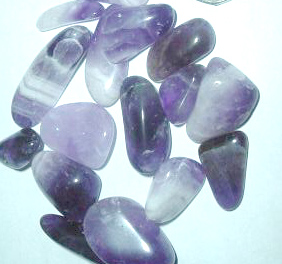
TUMBLING
The simplest way to enhance the beauty of stones is by tumbling. Rough stones are put in a revolving barrel with abrasives. Progressively finer abrasives are used which remove the scratches from the previous polishing abrasive until the scratches are invisible and a polish is obtained.
Tumbling takes time and should be done in a garage or other place where the noise of the tumbler is not noticeable. Tumbled stones are sold at many museum shops and give children their first look at gems. It is an easy project to do with children and takes a minimum of equipment, (approx. $80,) and good results are always assured. There are inexpensive settings that allow the stones to be made into jewelry.

CABOCHONS
Cutting en cabochon means that a stone is typically
polished on just the upper surface giving a rounded upper face. Cabochoning
is most commonly used with colored stones, or stones that show some special
property. Properties that are well displayed by this method include:
1) Asterism, for example as seen on a star sapphire or ruby, 2) play of
colors as in opal, 3) Schiller effect as in labradorite or moonstone, 4)
cateyes, hawkeyes, etc.
Typically the stone is cut with a flat bottom, but very dark stones may be hollowed to brighten them. The upper surface has a curved or domed top. The most common stones cut en cabochon are opaque stones such as turquoise that gain no advantage by faceting. Because the equipment needed for making a cabochon is minimal, it is a good place to begin practicing if you wish to become a proficient lapidary.
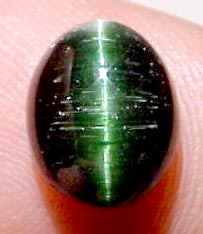
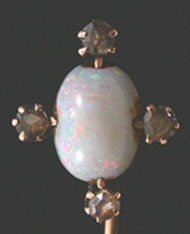
CARVING
Carving is the most distinctive lapidary art and can vary from simply carving a letter or symbol in a stone to ornate designs that reflect the artist's skills and often vary greatly with the nationality or culture of the person doing the carving.
One common type of carving is a cameo, usually
carved using a mollusc shell (but they can be done using any stone). Cameos
are typically profiles of attractive personages from the shoulders upward.
Cameos have a raised design that takes advantage of changes in color of
the material being carved. An incised or inscribed image that cuts
into the stone but in design is similar to a cameo is called an intaglio.
Intaglio is often done in dark stone such as hematite, dark agate, or carnelian.
Intaglios are often used as seal rings. Sealing wax is heated and the ring is pressed into the waz.
If a stone is carved from the back and the carving is visible through
the stone, it is called a reverse intaglio.
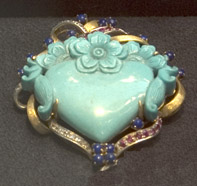
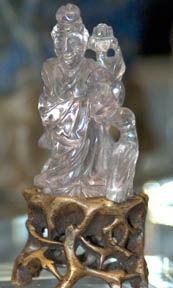

FACETING
Faceting produces flat-sided geometric gems. It used on all types of stones and brings out brilliance and fire and other special features because of how light interacts with the facets. A diamond is good example of a faceted gem. The surface of a diamond is covered with facets, flat surfaces. The flat surfaces are facets. The flat surfaces are highly polished. Facets are created by a faceter on a faceting machine.
Light entering a stone is reflected off the bottom facets and returned to the viewer. Brilliance should not be confused with fire. Fire is the multicolored flashes you see coming out of diamonds and other gems. These two properties are enhanced by the quality of the cut.
Many faceters are hobbyists. For those interested in collecting and creating valuable stones from rough, this is the way to go. The cost of rough minerals and your labor is usually less than the wholesale price of the finished gem.
However, the cost of lapidary equipment for faceting is not cheap and you can expect to spend a couple of thousand dollars for a good faceting machine and tools, moreover you must find someone to help you learn the basics.
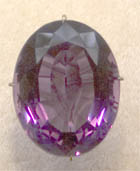
Shapes
Shapes of cut stones other than the standard are called fancy. Stones cut either en cabochon or faceted can, for example, be cut as rectangles, rounds, squares, crosses, teardrops, or free-form shapes. A stepped rectangle with the corners taken off is called an emerald cut.
Anything other than a round requires extra work
and is considered a fancy shapes. Hearts, pears, marquis , baguettes (long
thin gems), cushions, shield, trillions, are just a few of the shapes encountered.
Facets of a gem
The top portion of a cut gem is called the crown. The crown has quite a few different facets on it. The largest horizontal facet on the crown is called the table facet.
The bottom of a faceted stone is the pavilion. The portion between the crown, usually the widest part of the gem, and the pavilion is called the girdle. The girdle is usually a fairly thin line.
The larger facets are called mains, both on the pavilion and crown are main facets(See link below). Examples of mains are given on a brilliant cut diamond, for example Kite or bezel facets on the crown and pavilion facets on the pavilion. Adjoining the girdle are upper girdle facets. The facets next to the table are called star facets.
More detail of the brilliant cut is given under
Diamond cutting.
Return
to the syllabus main site
Return
to the Biological Sciences and Geology Website